
All categories
Featured selections
Trade Assurance
Buyer Central
Help Center
Get the app
Become a supplier

(2712 products available)







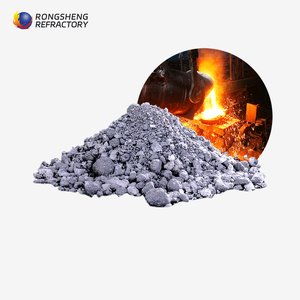




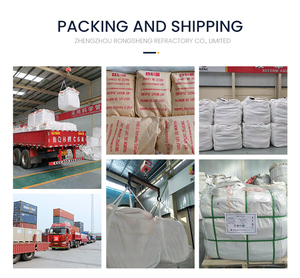












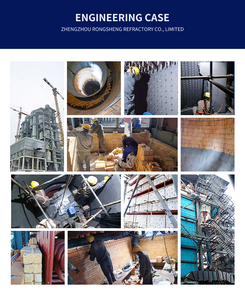



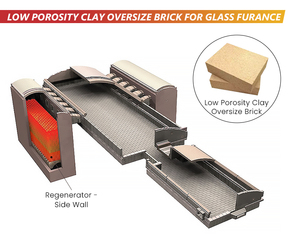


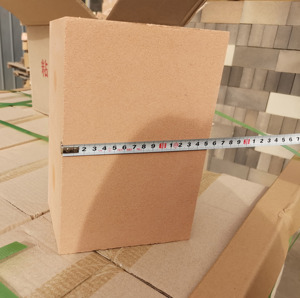
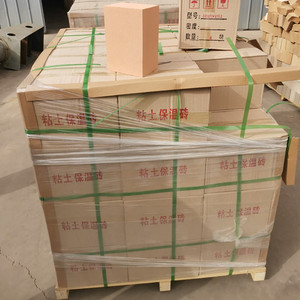
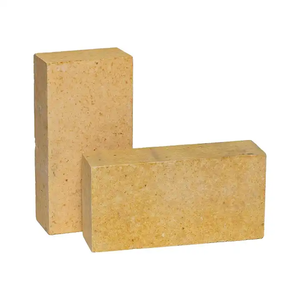



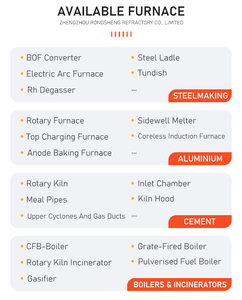



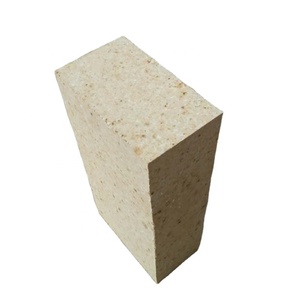



Boiler refractories are configured into different types, depending on the specific demands in the boiler part where they will be used. Common types include the following. They include.
Castable Refractory
Castable refractories are monolithic and, therefore, can be used to replace brick linings. This refractory can be cast in any shape, and because it is in a mix form, it is quite convenient to apply. In addition, they have the quality of being more resilient to chemical and thermal shocks than conventional firebricks. These properties make the castable refractory dominant in areas of the boiler that are hard to reach or where complex shapes are needed.
Insulating Refractory
Insulating refractory materials take on added roles, unlike other materials that focus on strength. Their role is to reduce the rate of heat transfer and, therefore, are lightweight and porous, with lower densities. They are responsible for retardating heat flow and minimizing heat losses, thus improving energy efficiency. They are applied in linings for furnace doors, walls, and backup linings that need low thermal conductivity.
Fire Brick Refractory
These are made from fire clay and can withstand high temperatures without cracking or melting. They are the most common type of boiler refractory used. Firebricks can be configured into different designs, which means they can be used for various installations. Their strength and durability have defined them as being most appropriate for critical boiler areas, such as fire chambers.
Mortar Refractory
This is a refractory material that binds bricks together to form mortar. Besides serving as a bonding agent, it has the quality of being able to withstand great temperatures by itself. It is mainly used in providing additional cohesion between firebricks. Mortar refractories, when necessary, can be used as an undercoat for repair or reconstitution of other refractory forms.
Brick Refractory
A refractory brick is a resistant material that is made of fire clay or silicon carbide, which is used to line fireboxes or fireplaces and, therefore, can withstand high temperatures. It is commonly used in industries that require furnaces, kilns, and fireplaces. Refractory bricks possess thermal resistance, chemical resistance, and durability. Moreover, they are formed into different shapes for specific industrial needs.
Fiber-Reinforced Cementitious Refractory
This is a relatively new refractory material. In addition to cement containing fibers that give it added strength, it is much lighter in weight than traditional refractories, which makes it easy to install. The fibers inside improve their tensile strength and, therefore, make it resistant to cracking, a property that has differentiated it for use in linings where stress can lead to failure.
The nature of these materials makes refractory boilers feature key aspects relevant to their operational purposes. Some of these include the following
Thermal Resistance
Boiler refractories need to withstand intense temperatures that may reach up to 2,000 degrees Fahrenheit. They should not heat up themselves or deform under such temperatures. This is one of their key properties. This applies to materials like firebricks and castables that have been specifically designed for high thermal stability.
Durability
Durability is vital for assuring long-term functionality. Refractories have to be constructed from strong materials that do not wear down, even with constant thermal cycling, mechanical stress, and exposure to corrosive substances.
Thermal Insulation
Insulating refractories are meant to minimize heat loss and guarantee that heat is well utilized within the boiler. They have lower densities and porosities that allow them to insulate better than dense refractories and prevent quick heat dissipation. They, therefore, improve energy efficiency, that is, by maintaining excess heat in the system.
Chemical Resistance
Boiler refractories are crucially positioned to constantly interact with fuels and combustion by-products. Therefore, this means they have to be resistant to chemicals such as sulfur, ash, and alkaline compounds that can lead to corrosion. Materials like silicon carbide have the added advantage of high chemical resistance.
Low Thermal Conductivity
Boiler refractory materials should not allow heat to escape from the boiler to the surroundings. This is particularly important in insulating refractories that help in effective heat retention within the boiler. Low thermal conductivity helps to improve energy efficiency and the safety of the environment around the boiler.
Boiler refractories are crucial in different boiler sections, improving efficiency, safety, and longevity in diverse industrial environments. Their diverse usage in industries includes the following.
Power Plants
Refractories in the power generation boiler insulation, furnace, and combustion chamber linings perform heat retention and safeguard the structure from the destructive impacts of high temperatures and corrosive elements. They play a major role in the maintenance of energy efficiency and boiler safety.
Cement Industry
Boilers in the cement industry have to deal with extreme temperatures and corrosive ash and gases during clinker production. Cement industries employ refractory materials. Refractories ensure that the boiler maintains structural integrity, improves energy efficiency, and minimizes maintenance in the cement industry.
Metallurgical Industry
Refractories in the metallurgical industry are used in boilers during ore smelting and the processing of metals. These refractorily secure the furnaces used in handling extreme temperatures. Besides, they handle corrosion by chemical and ash destructively. Refractories enhance the efficiency of thermal operations while also ensuring safety.
Pulp and Paper Industry
The pulp and paper industries use industrial boilers that consume large quantities of wood and biomass fuels. The boilers also use refractory materials. These materials minimize heat loss and protect the boiler components from the destructive impact of ash and chemical agents produced during fuel combustion.
Oil and Gas Industry
Refractories are widely used in the oil and gas industry for linings in boilers, furnaces, and incinerators. They help in processing hydrocarbons and waste management by withstanding high temperatures and the corrosion impact of sulfur and other detrimental chemicals. Oil and gas industries guarantee the longevity and safety of their thermal systems using refractorily.
Industrial Heating Systems
Refractories in industrial heating systems, such as kilns and ovens, improve the performance of boilers. They include enhancing heat retention, protecting boiler parts from high temperatures, and minimizing energy losses. Industries improve efficiency while cutting on heating costs with the use of refractory materials.
Choosing the right boiler refractory requires an assessment of many variables. Here are some key factors to consider.
Temperature Resistance
This is one of the essential factors influencing the choice of boiler refractory material. The refractory must withstand the operational temperature without softening or deforming. Higher operating temperatures necessitate using materials that can withstand such temperatures, while lower ones may not require such rigorous standards.
Corrosion Resistance
Fuel composition and combustion by-product will determine the boiler to opera fuels. These factors form an essential criterion for refractory material selection. Certain fuels release corrosive chemicals that can erode refractory materials. For instance, sulfur and chlorine. If the fuel contains such chemicals, choosing refractory with high chemical resistance, like silicon carbide, is crucial.
Mechanical Strength
Mechanical strength keeps the refractory material from cracking or spalling. Fluctuations in temperatures lead to thermal expansions and contractions. These continuous expansions and contractions can weaken the refractory over time. A strong refractory material can resist cracking for longer.
Thermal Conductivity
Effective heat retention is responsible for low thermal conductivity. Insulating refractories are intended to minimize heat loss in the boiler. They are responsible for a quick transfer of heat in the refractory, though. High thermal conductance leads to quicker heat dissipation, which is disadvantageous in energy utilization.
Application Method
Some refractories, like castables, can be molded into complex shapes and are easy to apply. This is convenient, especially in modern operations. Firebricks, though, will require skilled people for their installation. The choice of refractory material will depend on the ease of application in the new or existing boilers.
Cost-Effectiveness
The cost of refractory materials is crucial, so is their longevity. While inexpensive materials may reduce initial installation costs, frequent replacements will increase operational costs over time. Materials with longer life spans will lower their total cost in the long run, thus making them worth it.
Refractories are designed to resist extremely high temperatures. They protect the boiler's internal components by insulating them from heat. They withstand combustion chamber temperatures that can reach 2,000°F.
Boiler refractory is commonly made of fireclay bricks, castable refractory, and silicon carbide.
Routine and professional maintenance typically prolongs boiler refractories’ lifespan. Refractory mortars have a standard lifespan of approximately two to four years with routine maintenance. Well-maintained fiber refractories last about five years. Refractory bricks and castable materials, which require extensive professional intervention, last approximately 20 years.
Refractory material types correlate to the chemical compositions of boilers. Fireclay bricks and mortar are made of alumina and silica in variable proportions. Insulating refractories are made of lightweight materials with low thermal conductivity. Cementitious and fiber-reinforced refractory materials have variable tensile strength.
Boiler refractories are installed in five steps. First, the old refractory materials are removed through chipping. Second, the surfaces are prepared by cleaning and smoothing them. Third, the refractory mortar is prepared. Fourth, the mortar is applied. Finally, the newly installed refractory is cured through the application of damp cloths and realignment with chemical adhesives.